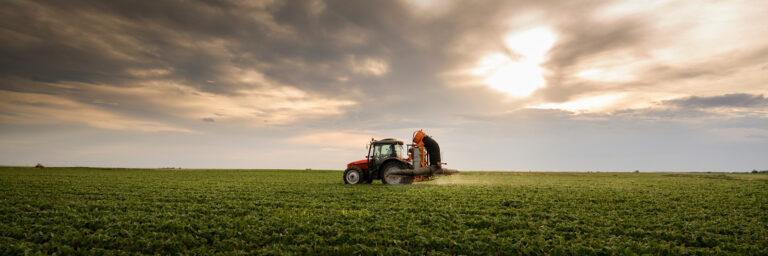
April Business Update: SRUC
After two years of operation as a Limited Company, Agrecalc became part of Scotland’s Rural College (SRUC) as of 1 April 2025.
Richard Percy, an Oxbury non-executive director since 2020, has been farming on Cottingham Farms in the Chilterns for nearly 40 years. He is a commercial cereal farmer focusing mainly on a winter wheat, spring barley for malting and oilseed rape rotation. The enterprise which he now manages with his son, Henry, is spread across nearly 400 hectares including the home farm as well as lands farmed in long-running partnerships and some contract farming areas.
Richard is focused on the yield of his crops as well as cost management and has adapted his farming practices over the years to improve effectiveness. These days he practices minimal tillage to limit soil disturbance, and he has been keeping straw on-field for years to cover the bare soil. They are now introducing cover crops.
This project is a partnership between Oxbury, Agrecalc, SAC Consulting and Downforce technologies.
Many UK businesses have published Net Zero targets to comply with the Climate Change Act. Their targets cover so-called Scope 3 emissions which are within their supply chain, but not directly controlled by the business.
Many farmers who supply produce to food processors and retailers have recently been asked to provide information on their carbon emissions and storage which can be quite onerous to do.
As these demands increase, Oxbury believes that farmers who have prepared baselines and are able to plan to reduce emissions and increase carbon stored, will be better prepared to respond to such demands and in time take advantage of better prices or choose buyers based on their implementation.
Many farmers do not know how to start such a baseline plan and what information will be required. Richard Percy volunteered his farm to be used as a case study by Oxbury to illustrate to farmers how to set about collecting relevant information and developing baselines.
The project started with creating a map of the home farm using The LandApp. Richard provided his SBI number to Oxbury’s Head of Sustainable Banking who created the map. The LandApp provides a variety of base data layers showing the location of the farm within the London Greenbelt, the more than 2 kilometres of public footpaths traversing the site and presence of 2.1 hectares of ancient woodland.
Read the full report which includes the map: Oxbury Bank PLC Natural Capital Report 2023.
SAC Consulting conducted a carbon footprint with the Agrecalc carbon calculator at the end of 2023 using the Future Farming Resilience Fund provided by DEFRA to cover the costs.
Carolien Samson, Oxbury’s Head of Sustainable Banking, says: “Agrecalc was chosen as it was the tool used by SAC Consulting in the original pilot project, and was the calculator that focused on the whole farm assessment, rather than a specific enterprise or product. We also appreciate the technology development that is going into the Agrecalc calculator, which will eventually allow us to integrate other farm management tools, and our own systems – our proprietary Oxbury Earth technology platform.
“And we have confidence that there’s been a lot of research going into the latest Agrecalc model and therefore it’s being maintained in terms of the information contained within it.
“The other reason is that we also used Future Farm Resilience Fund to recover the costs, and Agrecalc is one of the tools mentioned as suitable for the scheme, so the farmer didn’t have to pay for that himself directly.”
The carbon footprint highlighted some expected areas of large emissions in an arable business including diesel, but fertiliser accounts for 84% of emissions. This has immediately highlighted the main area where Richard can focus his attention to assess options to reduce the farm emissions.
Richard’s diesel use is about two thirds per hectare compared to similar farms and he therefore has limited capacity to reduce these emissions. In future, any equipment replaced should be as fuel efficient as possible or potentially electric to have an impact on these emissions. Total emissions on the home farm equated to approximately 270 tCO2e in 2023.
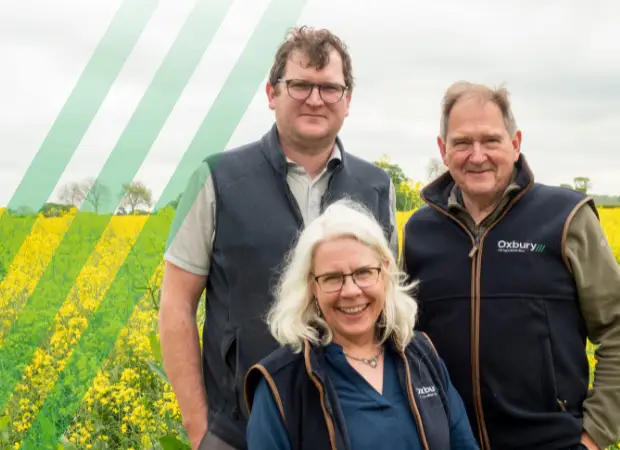
“The more farmers that get involved in this, the more data we get. The more data we get, the more we’ll be able to discuss it. So, Oxbury is absolutely fundamental at bringing together people from different soil types, from different farming systems and be able to compare the results.”
Richard Percy, farmer and Oxbury non-executive director
The challenges faced mainly consisted of aligning normal farm cycles with the carbon assessment. It had to be done at periods where there’s less farming activity, and that it falls into the logical points of farming cycles. The project was focused on the single farm and the work was distributed among the suppliers. Rolling the process out at scale, and the challenges connected with it, remain to be seen through further collaboration.
“The other side of the challenge was that our initial expectations were quite simple, perhaps naïvely so”, says Carolien. “Once we started seeing the results, we could see how much more was possible to be done, after the time the initial analysis was completed. There is a complexity that represents a challenge when it comes to communicating it in simple language – in presenting a single picture to the farmer.
“However, one thing was clear: a farm has to baseline. We are moving into this world where you’re going to have to start talking about how you’ve baselined. The current state of play is that carbon assessments are seen as a one-off; the deeper conversation lies around how we’re going to communicate a potential future target.”
“The teams from both Agrecalc and SAC Consulting, who led the feedback session, really know their stuff”, Carolien says. “Once we started talking about the answers with Richard, it became a conversation, and Richard could take immediate actions and see how he could apply this knowledge and data.
“It showed the people involved could understand and talk to him. We followed it up with a conversation at Groundswell, where he got to meet the Agrecalc team, and it reinforced the message that – when I’ve got a technical question, I can go to Agrecalc. That, I believe, worked very well for us.”
Further conversations between Agrecalc and Oxbury will revolve around turning the numbers into a proper net-zero plan. The benchmarking that Agrecalc gives has been deemed as a good feature; further steps will involve how to turn these into practical actions, and what is feasible on a particular farm. Agrecalc should be used as a management tool, once it is clear how to convert the numbers into targets for a net-zero plan. That will lead to communicating well-defined actions on how to deal with the supply chain requests around net zero.
The carbon footprint also included the approximately 75 tCO2e stored by trees including the ancient woodland on farm.
Richard says: “What the bank has done is to give us an idea of how we compare to other businesses. We know what carbon we’re using to produce our crops. But what we don’t know, and couldn’t know is how much carbon we’re tying up in the soil in terms of organic matter, and more importantly, how that changes from year to year.”
Oxbury partnered with Downforce Technologies to obtain a soil carbon assessment of the farm. The process is done completely remotely using satellite imagery combined with weather and soil information to model changes in soil carbon stored at a depth of 30 centimetres. The satellite imagery, rainfall, and temperature information are collected every 10 days and average soil carbon determined at 10m resolution.
Richard is able to see how soil carbon levels changed on his farm since 2017 and consider how annual weather changes and crop rotations affect the process. During a wet year, more carbon is stored compared to a dry year and certain crops deplete soil carbon more than others. The home farm has a current stock of between 8,000 and 9,000 tons of soil carbon stored across 100 hectares.
However, the crucial information from a supply-chain perspective is the change in the soil carbon stock on an annual basis. During the dry year of 2022, Richard’s stored 670 tCO2e less than 2021, but in the wet 2023, he stored 1,962 tCO2e more than the previous year. Due to this volatility, we used a 3-year average of 564 tCO2e stored in soil for our calculation.
Based on his 2023 emissions and carbon stored both in trees and soil, Richard’s operation was carbon negative for the year – more carbon was stored than emitted.
| 2023 (tCO2e) |
Total emissions from farming | 270 |
Carbon stored in trees | -75 |
Carbon stored in soil (3-year average) | -564 |
Net position | -369 |
Net zero involves reporting against a baseline and a future target and therefore this enterprise still has some work to do. From an emissions perspective, 2023 will be the baseline for future reporting with an aim to reduce overall emissions by more than 25% by 2040 in line with the UK Carbon Budget and the Science Based Targets Initiative’s methodology.
From a soil carbon stored perspective, the average between 2017 – 2019 will serve as a baseline for reporting which equates to 8,170.3 tons of carbon. In 2023, the carbon stock was 8,154 tons, therefore short of the baseline and any required improvements.
Richard provides strong evidence that farmers need a complete picture of both their emissions and stored carbon to be able to communicate their carbon position to the supply chain and the general public. He now has baseline information which he can use to make decisions to focus on both cutting emissions and increasing carbon stored while maintaining crop yields and productivity.
“The more farmers that get involved in this, the more data we get. The more data we get, the more we’ll be able to discuss it. So, Oxbury is absolutely fundamental at bringing together people from different soil types, from different farming systems and be able to compare the results”, Richard concludes.
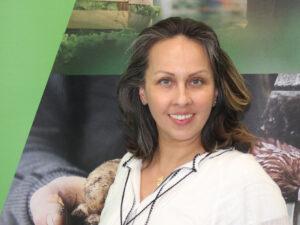
Former journalist, now SEO writer and Head of Marketing, combining two great loves of content creation and tech. In charge of turning Agrecalc marketing vision into strategy and tangible assets.
This case study was written jointly with the Oxbury Bank Communications team.

After two years of operation as a Limited Company, Agrecalc became part of Scotland’s Rural College (SRUC) as of 1 April 2025.
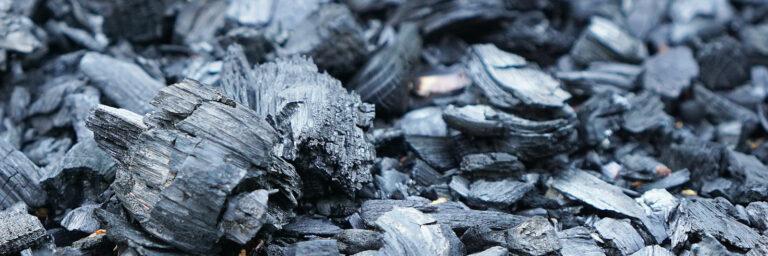
Biochar is a carbon-rich material produced by pyrolysing biomass, which offers a variety of potential agronomic benefits. In this guest article, Black Bull Biochar discusses how these effects work together to bolster productivity, sustainability, and resilience in farming.
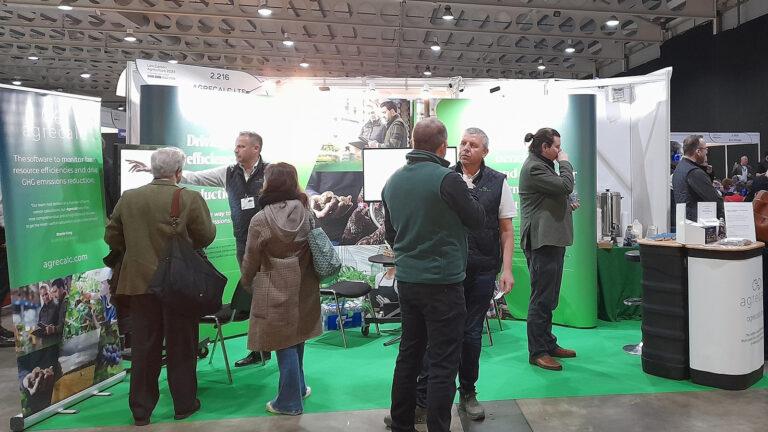
The Agrecalc team is looking forward to welcoming you at our stand (2.844) at this year’s Low Carbon Agriculture Show, taking place on March 5 and 6, at NAEC Stoneleigh near Kenilworth.